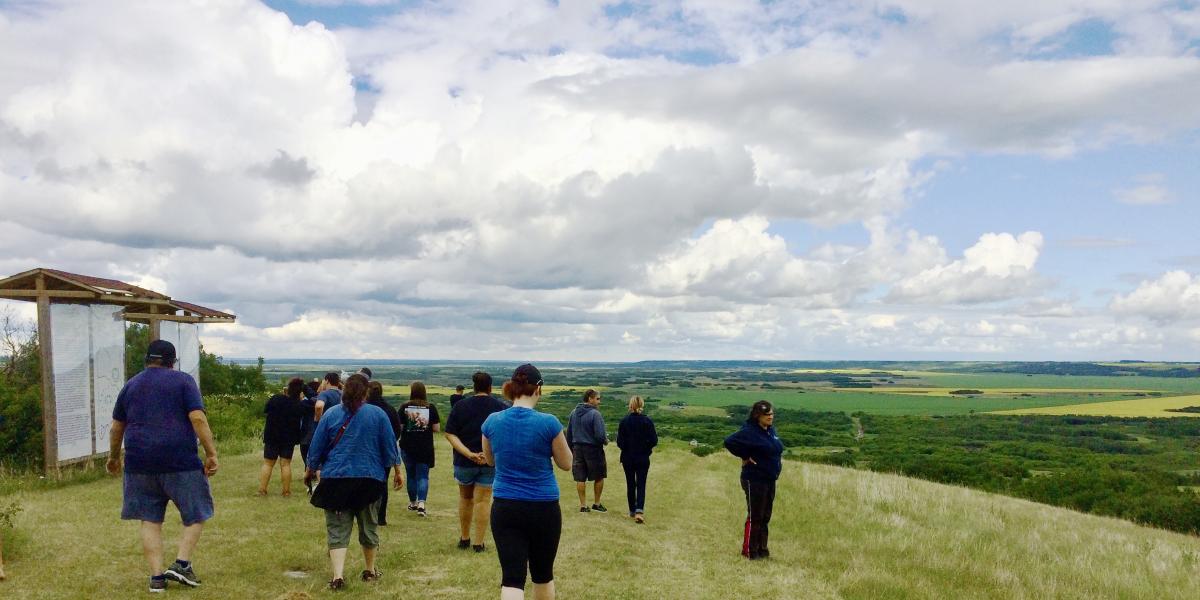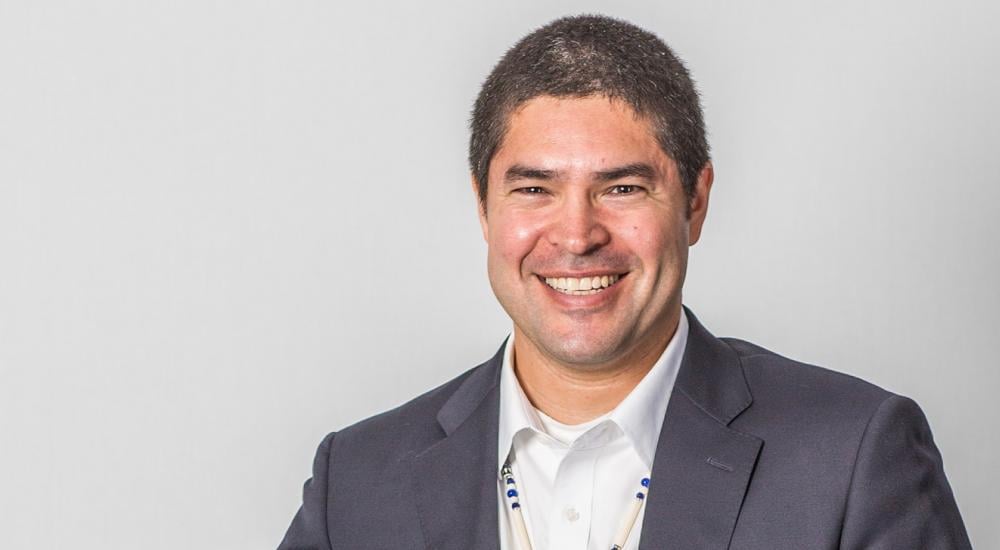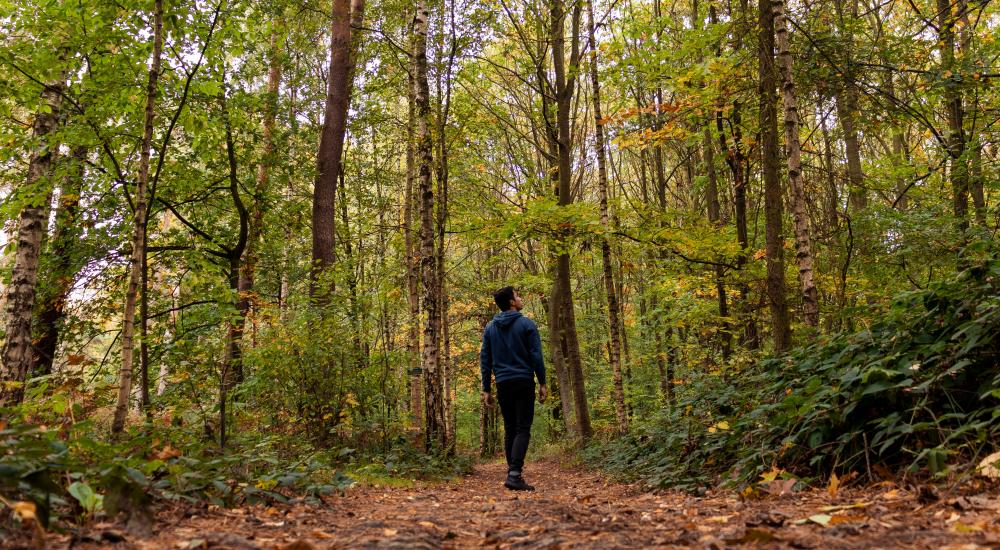Connecting Indigenous Students Around the World

When the Canadian government launched a grant program in fall 2020 to help colleges adapt education abroad programming and to increase access to global learning opportunities during the pandemic, staff in the international office at York University in Toronto decided to develop a program for a population underrepresented in education abroad: Indigenous students.
“We knew that we wanted to use it to create an opportunity for students that otherwise hadn't been able to access mobility programs,” said Katie Gribbons, study abroad coordinator at York International, the institution’s international office.
York International reached out to its partners around the world to see who might be interested in creating a virtual exchange program for Indigenous students. Within the span of a few months, the international office, in collaboration with the university’s Centre at York is Centre for Indigenous Student Services, launched the virtual International Indigenous Student Exchange Program (IISEP).
They were joined by four other institutions: University of Costa Rica, Tecnólogico de Monterrey in Mexico, University of the Philippines-Baguio City in the Philippines, and University San Francisco de Quito, in Ecuador. Eighteen Indigenous students, including eight from York, signed up for the eight-week program in spring 2021.
“I absolutely loved having the chance to…learn from other Indigenous students across the globe. It was especially interesting seeing the similarities in the issues Indigenous groups and nations face, even if they are on different continents.” —Aleria McKay
Aleria McKay, a recent graduate from York who is Onondaga and Teme Augama Anishnabai, says she had never had a chance to participate in any kind of global learning opportunity prior to the program. She jumped at the opportunity to participate in a virtual exchange because traveling wouldn’t have been feasible for her.
“I absolutely loved having the chance to…learn from other Indigenous students across the globe,” she says. “It was especially interesting seeing the similarities in the issues Indigenous groups and nations face, even if they are on different continents.”
She appreciated being part of a global learning community made up of students who had similar backgrounds to her own. “For Indigenous students especially, academia can feel very daunting and isolating, something I experienced firsthand,” says McKay, who is from the Six Nations of the Grand River, the largest First Nations reserve in Canada.
Creating Global Opportunities for Indigenous Students
In many countries, including the United States and Canada, Indigenous students are underrepresented in higher education and even more so in education abroad. In the United States, American Indian and Alaska Native students made up .7 percent of postsecondary enrollment in 2019–20, and only .5 percent of U.S. students abroad. That number does not include other Indigenous populations such as Native Hawaiians and other Pacific Islanders. (White students make up around 54 percent of overall enrollment and 70 percent of education abroad participants.)
While there is considerable interest among Indigenous students for intercultural and international experiences, a study on the outbound mobility of Indigenous students in Canada found that barriers to those experiences include finances, personal commitments such as having dependents (many Indigenous college students are non-traditional), racism and safety, and a desire for programs that apply an Indigenous approach to study abroad.
A number of institutions, particularly those that have well-established support programs for Indigenous students, are developing global learning opportunities specifically for Indigenous students. Other institutions have focused on creating international programs that focus the histories and experiences of the Indigenous populations in specific locations. While some international offices have previously created study away programs that provide intercultural experiential learning opportunities through travel to the Navajo Nation or other American Indian reservations in the United States, there are only a few programs designed to meet the needs of Indigenous students.
There is growing interest in that type of culturally responsive programming. Since York started the Indigenous student exchange program in 2021, they have had interest from other colleges across Canada, as well as institutions in countries such as Argentina, Malaysia, Sweden, and the United States. In the second iteration of the program in fall 2021, York expanded the program to 12 weeks and included two Australian institutions, Deakin University and University of New South Wales. Staff and faculty are also considering how to incorporate a travel component the next time they offer the program.
“Indigenous communities around the world share quite a bit in terms of their worldview,” says Chad Stephen Hamill, professor of applied Indigenous studies at Northern Arizona University (NAU) in Flagstaff. “There are many parallels, but our Indigenous students—and this applies…globally—rarely get opportunities to interact and engage with Indigenous communities and their peers abroad.”
In 2014, Hamill, a descendant of the Spokane Tribe, co-founded the Indigenous Cultural and Educational Exchange(ICEE) at NAU in collaboration with leadership at the University of Tasmania in Australia. NAU students and faculty, along with a Native elder, spent 2-3 weeks abroad in Australia during the summer at University of Tasmania. In January, during their summer, a group from Australia would come to NAU.
The exchange quickly expanded to include the University of Arizona, Thompson Rivers University in Canada, and the University of Waikato in New Zealand. (The program has been on hold since 2020 because of the pandemic). When students meet their peers abroad, “there’s just an instant connection,” Hamill says.
“Indigenous communities around the world share quite a bit in terms of their worldview. There are many parallels, but our Indigenous students—and this applies…globally—rarely get opportunities to interact and engage with Indigenous communities and their peers abroad.” —Chad Stephen Hamill
In summer 2018, the University of North Carolina-Pembroke (UNC Pembroke), the University of Saskatchewan in Canada, and Swinburne University of Technology in Australia launched the International Indigenous Exchange Consortium (IIEC). Faculty teach the same curriculum about the Native communities in proximity to the host institution.
According to Jane Haladay, a professor in the American Indian Studies department at UNC Pembroke, the goal was to create a program based on a partnership between universities that had Indigenous Studies, Native Studies, or American Indian Studies programs; that served a significant number of Native and Indigenous students; and were close to Native communities. They wanted to create a supportive program that allowed Indigenous and non-Indigenous students to understand both the cultural difference and the incredible number of connections between global Indigenous communities.
The first year, the students from the United States and Australia spent two weeks in Saskatchewan. The group camped on the homelands of the Poundmaker Cree First Nation, learning about traditional medicine plants and Indigenous games from First Nations knowledge keepers.
In 2019, the program moved to Melbourne; UNC Pembroke was supposed to host Australian and Canadian students in 2020 before the pandemic hit. The program is expected to resume in summer 2023, says Haladay.
Designing Supportive Global Learning Communities
Professor Carolyn Podruchny was the faculty lead for the virtual exchange at York University. She had previous experience with online teaching and knew that live, interactive discussions would be the most effective mode of instruction for the type of learning community they hoped to create.
“I had experimented with having asynchronous discussions and it wasn't appropriate for this particular model, because of the sensitive nature of the material that we were discussing…we really wanted this to be about building relationships and trust,” Podruchny says. “Oftentimes that's hard to do in an online discussion forum.”
Although Podruchny helped facilitate the classes, the program included faculty lecturers from the partner institutions as well as other guest speakers. Topics included food sovereignty, gender, and climate change.
They also gave students opportunities to learn about each other's cultural traditions and home communities, including starting each class with a land acknowledgement and offering tobacco, an Indigenous practice in Canada. “We tried to infuse the classes with ceremony as much as possible,” Podruchny says.
“The students were very intrigued about who and who was not considered Indigenous in one another's countries [based on] what their particular history of colonialism looked like.” —Carolyn Podruchny
Another issue discussed at length was the definition of Indigeneity. “I spent a lot of time talking about the lack of clear definition of indigeneity worldwide,” she says. “The students were very intrigued about who and who was not considered Indigenous in one another's countries [based on] what their particular history of colonialism looked like.”
The program concluded with a Knowledge Fair, where students presented projects they completed in cross-country teams. Student projects included Indigenous knowledge and technologies in education, Indigenous language survival and revitalization in Canada and the Philippines, and Indigenous gender and sexuality around the world.
For the students that came from Spanish-speaking countries, faculty mentors from the partner institutions in Costa Rica, Ecuador, and Mexico provided Spanish-language translation during class discussions. During the public Knowledge Fairs, live interpretation was provided and funded by York.
Building in Cultural Supports
Part of the program design for both the IISEP and ICEE was to include cultural elements specific to the students who would participate, including acknowledging difficult topics and inviting elders to be present.
Faculty and staff at York and all partner institutions in IISEP were quick to check in with students who might have been triggered by difficult class discussions, says Helen Balderama, director of global engagement and partnerships.
“We provided a lot of support to the students to create that safe space of learning and exchanging because on the one hand, it's a good experience to celebrate and share their communities and cultures, but there's also instances where some of the topics are quite sensitive,” she says. “That can be triggering for some of our Indigenous students because of historical trauma and historical challenges in their different contexts.”
For the NAU Indigenous Cultural and Education Exchange, a key component was the inclusion of Indigenous elders who traveled along with students, faculty, and staff. “It wasn't just a student exchange,” Hamill says. “The elders served a very important role. They were there as a cultural touchstone for their group of students, which in many cases, includes students that have very limited experience outside their home communities.”
In addition to the connections that the Indigenous students forged with each other, the elders were also able to connect with their counterparts, Hamill adds.
Another consideration when the programs were designed was whether or not to allow non-Indigenous students to enroll. The virtual exchange program at York was only open to students who identified as Indigenous, whereas the IIEC program at UNC Pembroke was not specifically created for Indigenous students, but rather “to teach the histories and experiences of the Indigenous populations in very particular places,” says Mary Ann Jacobs, the chair of American Indian studies. “[The program was] designed for everyone because the history of Indigenous people is now the history of the United States, Canada, and Australia.”
NAU’s ICEE was designed for Indigenous students, though those who are not Indigenous can apply if they meet a requirement of “experience in Indigenous communities.”
Balderma says that many non-Indigenous students were interested in the program, but York International decided to prioritize the need of Indigenous students for a learning environment where they were comfortable sharing sometimes very personal experiences.
The international office was also careful to consult with the university’s Indigenous council, as well as work closely with the Indigenous student services center. Podruchny, who is not Indigenous, also says that ideally, programs like the virtual exchange will be spearheaded by Indigenous faculty.
“We really wanted to find an Indigenous faculty member to be the lead at York,” Podruchny says. “But one of the problems is that all Indigenous faculty members are so overextended that we really had trouble finding someone. I'm happy to co-lead, but I think it's really important that it be Indigenous-led.”
Forging Long-Standing Relationships
One byproduct of creating programs for Indigenous students: strengthening connections and partnerships between departments on campus.
Podruchny says that the virtual exchange program was the first time she had ever worked with international education, and the experience helped expand her own research. “I always thought of myself as a Canadian historian,” she says. “I never thought of myself as global at all.”
The IISEP fostered collaboration between faculty members beyond the immediate course. Podruchny, for instance, will be traveling to Ecuador to visit York’s faculty partners there and is applying for a grant to bring the faculty facilitators from all six international partners to Canada in spring 2023. She has been working with two faculty members at the University of the Philippines to edit a collection on Philippine Indigeneity and has been a visiting professor in the new in Indigenous Studies program there.
The new focus on Indigenous studies at University of the Philippines, along with the participation in the virtual exchange program, is welcomed by its Indigenous students. Dona Mariz Bullong is a fourth-year student studying language and literature at the University of the Philippines-Baguio City. Although she grew up in a city, La Trinidad, she’s part of the Kankana-ey Indigenous community.
“We provided a lot of support to the students to create that safe space of learning and exchanging because on the one hand, it's a good experience to celebrate and share their communities and cultures, but there's also instances where some of the topics are quite sensitive.” —Helen Balderama
The virtual exchange allowed her to reflect on her Indigenous identity alongside other students. “I remember discussing being an Indigenous person in a city where adapting to society very quickly was the means to survival, and how that survival mode somehow distances us from our roots,” she says. “It was a common sentiment among us that we felt how our Indigeneity was somehow waning when faced with the current urban environment.”
She says Indigenous people in the Philippines were happy to see that the university was interested in focusing on their cultures and communities. “The same sentiment goes for the IISEP,” Bullong says. “If our local program validates a lot of experiences, then the global one is life-changing.” •
About International Educator
International Educator is NAFSA’s flagship publication and has been published continually since 1990. As a record of the association and the field of international education, IE includes articles on a variety of topics, trends, and issues facing NAFSA members and their work.
From in-depth features to interviews with thought leaders and columns tailored to NAFSA’s knowledge communities, IE provides must-read context and analysis to those working around the globe to advance international education and exchange.
About NAFSA
NAFSA: Association of International Educators is the world's largest nonprofit association dedicated to international education and exchange. NAFSA serves the needs of more than 10,000 members and international educators worldwide at more than 3,500 institutions, in over 150 countries.
NAFSA membership provides you with unmatched access to best-in-class programs, critical updates, and resources to professionalize your practice. Members gain unrivaled opportunities to partner with experienced international education leaders.
















